
 In 1805 George Rapp, a German Piest, led his followers to found a utopian community on the banks of the Connoquenessing Creek in Western Pennsylvania. They called the community Harmony.
In 1805 George Rapp, a German Piest, led his followers to found a utopian community on the banks of the Connoquenessing Creek in Western Pennsylvania. They called the community Harmony.The Harmonists lived together as brothers and sisters. Initially they cleared 150 acres for farming. Over the next few years they built a church, a school, a grainery, 130 houses, barns, an inn, a music pavilion, a whiskey distillery, and sundry other buildings. They carried clay on their backs to build a log dam. They laid a rode. They built a bridge. They planted a garden with a labyrinth. They ended up with 7,000 acres.
But in 1811 they stopped building. Other people were moving into the area, increasing land prices. Often these new neighbors were hostile to the Harmony folk. The next year, Pennsylvania required men to fight in the War of 1812 or pay a fine. The pacifist Harmonists resented paying, and men who had to serve resented those who could afford to buy their way out. The Harmony Society decided to resettle in Indiana.
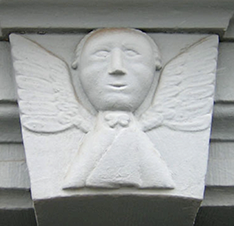 Father Rapp often spoke of the Virgin Sophia, a spirit or Goddess in Christian mysticism. She was carved over the doorway of Rapp's adopted son's home. She can still be seen over the door, which is now the entrance to the Harmony Museum.
Father Rapp often spoke of the Virgin Sophia, a spirit or Goddess in Christian mysticism. She was carved over the doorway of Rapp's adopted son's home. She can still be seen over the door, which is now the entrance to the Harmony Museum.
In 1814 the Harmony Society sold the Pennsylvanian town's assets. The largest investor, Mennonite Abraham Ziegler, is one of my ancestors.
That's why I spent my childhood Christmas holidays in Harmony, Pennsylvania.
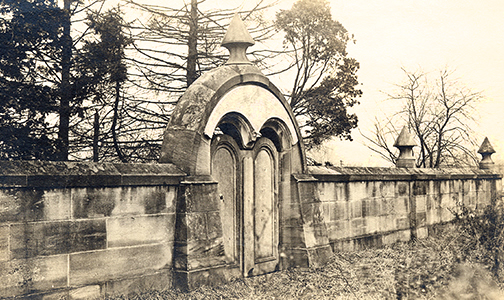 |
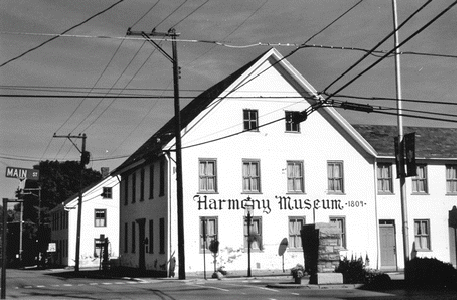 |
|
| The cemetery gate can be swiveled closed at night to keep spirits in. | The Virgin Sophia carving is on the left face of the building. | |
 |
 |
|
| "Rapp's seat," where he was wont to sit, is a challenge to reach. | Map of Harmony in 1901 |
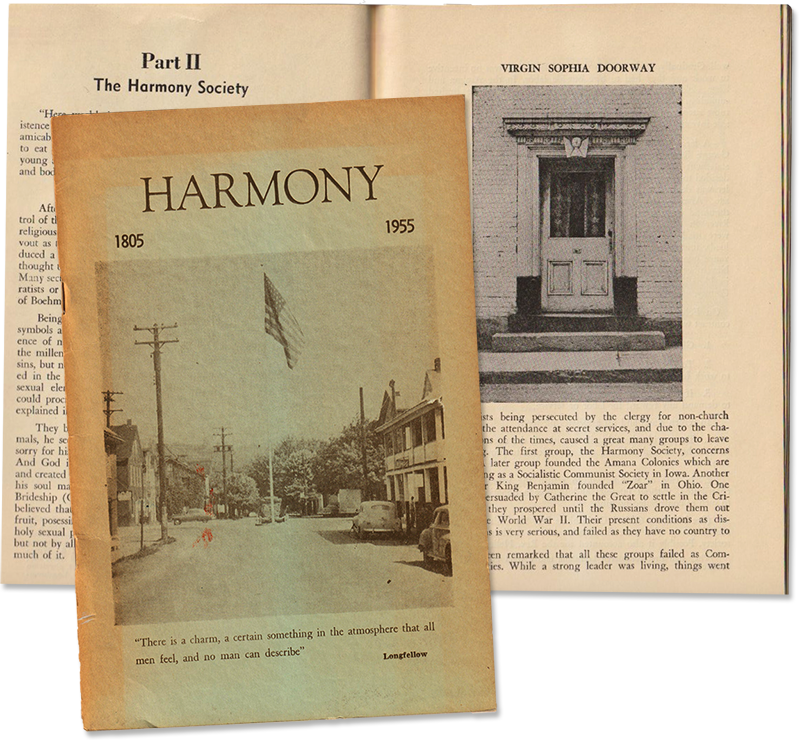
Speaking of challenges, usually when I paint my architectural watercolors I'm working from my own photographs. I couldn't visit Harmony this year, so I had to rely on this grainy old photo of the Virgin Sophia doorway. The photo's in a booklet that my grandfather Arthur Stewart, the town doctor, and Reverend Veith put together on the 150th anniversary of the year Rapp started building Harmony.
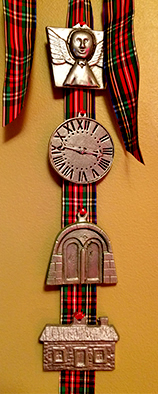
The Harmony Museum sells pewter ornaments. My sister gave these to me: she used to give me an ornament every Christmas.

